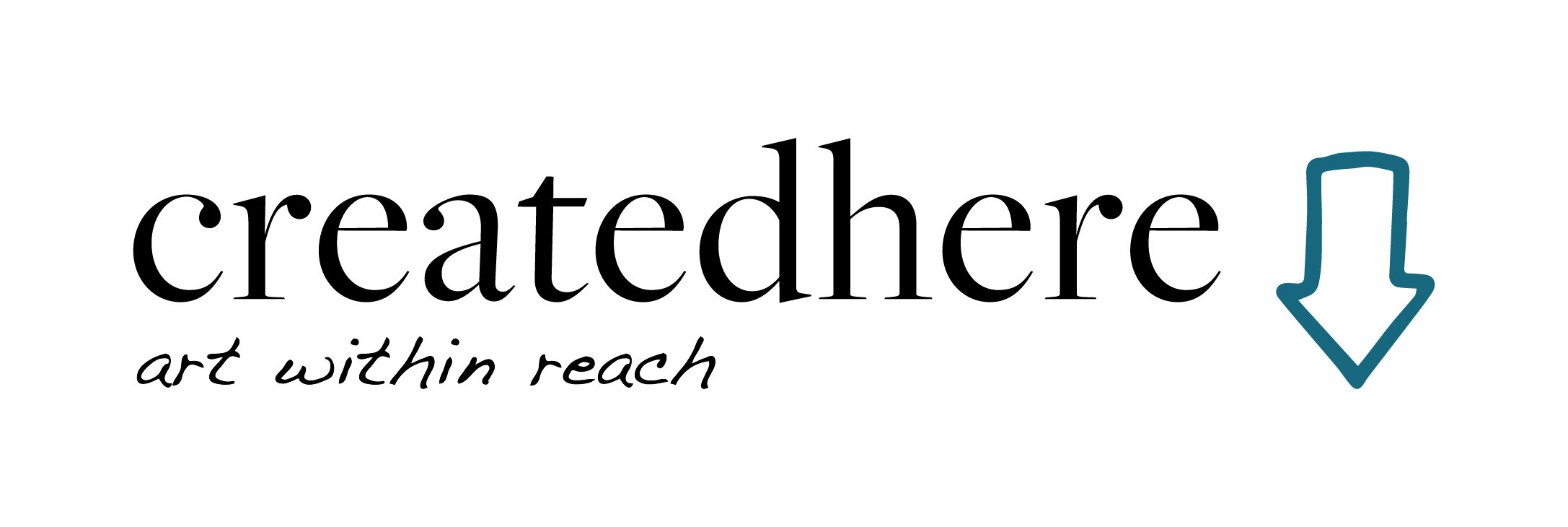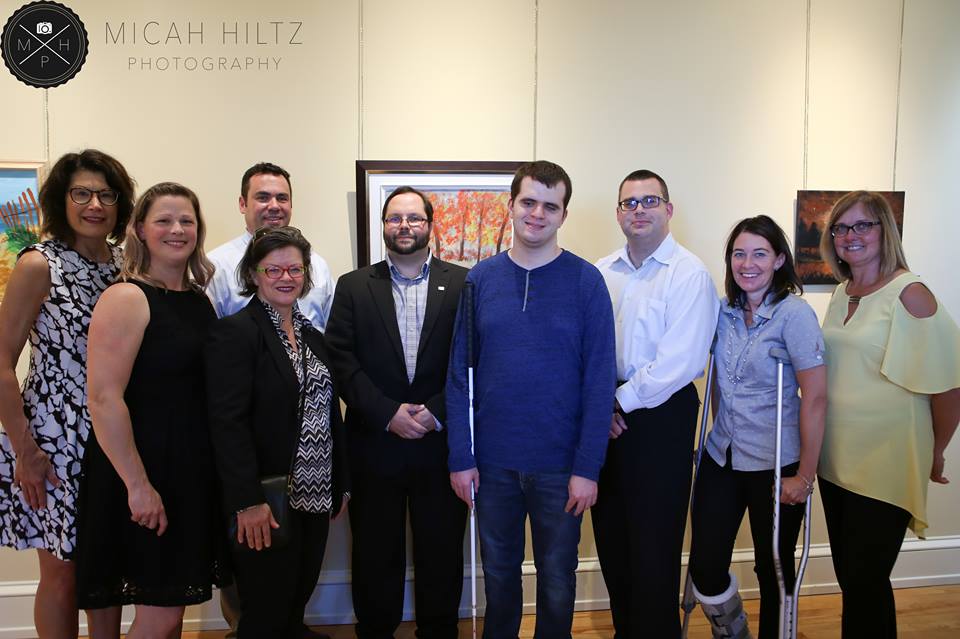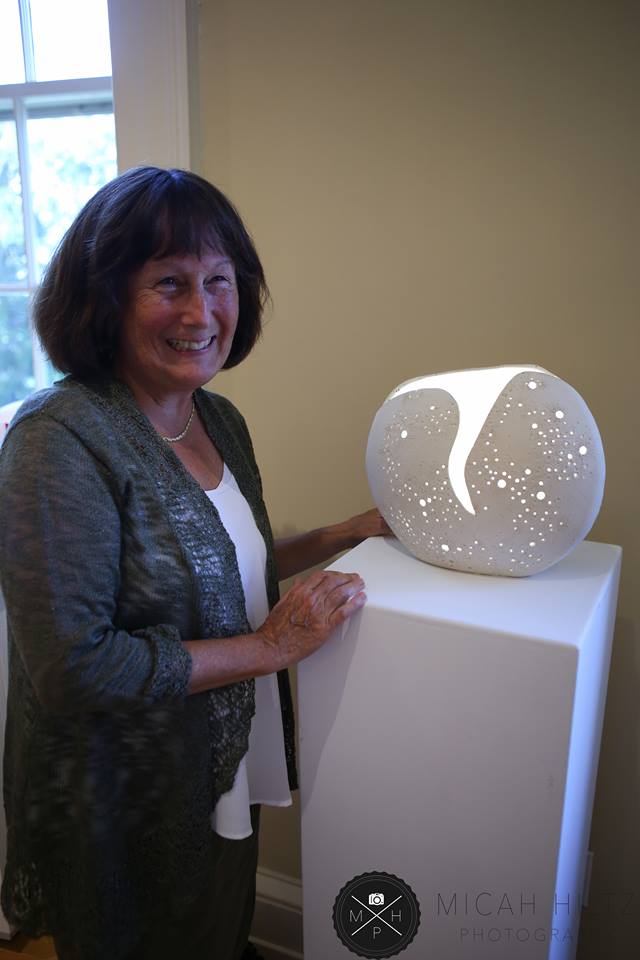CNIB Art Show- Seeing beyond vision loss
I am always inspired by artists. But when it comes to people who create despite seemingly impossible limitations, I'm just blown away. This group are some of those people. When many of us would feel buried by the difficulties of dealing with vision loss, these individuals have pushed through and reached out to make something beautiful. It drives home the fact that in the end, we make with our hands, not our eyes.
Recently, CNIB New Brunswick opened an art show at Government House in Fredericton featuring the work of a group of artists who have struggled with vision loss, including paintings, ceramics, stained glass and more. This is the third show of its kind, and the goal behind it is to educate the public about what people with vision loss can do and to give CNIB clients a venue to showcase their work.
The initiator behind the event is an inspiring lady named Marian Zaichkowski, an 86-year-old volunteer for CNIB who has experienced vision loss herself. She has age-related macular degeneration, which means she has only peripheral vision. Not one to let anything stop her, Marian earned herself a BA in History at Mount Allison at the age of 75. Marian also started painting on a whim, after living with vision loss for a number of years, saying to herself that she had the best excuse, "If it doesn't work out I can blame it on my eyes and not on lack of talent!" It turned out she was actually pretty good, and most importantly, she loved it. She now makes calendars of her paintings, which can be found in most optometrists' offices in Newfoundland!
One day, at an art show, Marian had the crazy idea to do a show featuring only the work of vision-impaired clients of CNIB. She had a connection with someone at the Government House, mentioned the idea and before she knew it everyone was catching the vision. (Pun intended)
"These people (with vision loss) are so talented and they don't believe it. People put you down in a lot of ways when you struggle with vision loss, they think of you as handicapped, and you start to think of yourself that way."
Marian wanted to give CNIB clients a reason to try something, make something, be creative despite their limitations. It turned out that the artists were so excited by the whole idea. The prestige, the honour of showing at the Government house made them feel really important, that their work was appreciated. They were excited for people to actually see what they can do.
"People think, when you lose your eyesight, you should just sit around because you can't do anything. It's not right. It's not true. I thought if we could have a show, people will see what we are capable of."
She was blown away by the first show. The quality of the work was beyond what she expected, and it was very well received by those who attended. The artists themselves were very much encouraged.
Although she is currently benched with some health issues and was unable to attend the opening of the current show, Marian is optimistic that the vision will continue. "I'm hoping it will grow from here. It gives our clients something to look forward to, and to work towards."
Here is a bit about some of the artists involved in the exhibition currently on display at the Old Government House in Fredericton until October 26th. If you have the chance, go see it in person!
Betsy Legault - Grand-Barachois, New Brunswick
From a small studio in Grand-Barachois, New Brunswick, Betsy Legault revitalized a deep creative relationship with pottery. After getting married in 1980, her husband John introduced her to the craft, and despite her visual disability, she found that clay was a natural tactile expression of her imagination.
Typically, careers and family responsibilities took priority and pottery literally sat shelved for years, but it was always a goal to return to the art after retirement.
In 2001, John and Betsy made the move from Moncton to Grand-Barachois into their Buckminster Fuller-inspired home on the Northumberland Strait.
After retiring from teaching in 2009, Betsy and John spent “100 days of clay” in Sun City, Arizona learning studio techniques and honing their craft from other potters willing to freely share their knowledge and skills. This uncompetitive environment awakened an experimental creativity that continues today.
Impossible not to be inspired by waking up next to the ocean every day, this influence spills into both of their works. Betsy finds much solace living beside this horizontal vortex we call the beach.
Betsy’s Moon Lamps were quite literally inspired by the light of the moon. After being diagnosed with Stargardt’s disease at 18, she believes that making lamps may have been a subconscious way of adding more light into her life.
Candace Downing - Prince William, NB
My work is mostly landscape, nature in its true form, as I see it. The pieces in this show have come from inspiration from vacation in British Columbia. Nature for me provides ultimate beauty, a mountain, tree, water, offering inspiration and new life from the old. Knowing this beauty has been there and created all on its own. Waiting for its beauty to be admired offers thankfulness and pleasure.
Janet Terris - Riverview, NB
From a young age, Janet loved to work with fabric, sewing and making things for others to enjoy. Over the years, she has learned many new techniques and to work with different types of fabric and materials. From cotton aprons useful in everyday kitchen tasks to felt masks for kids to play pretend or key fobs so you don't misplace your keys, Janet's creative work features a wide variety of items that are both beautiful and functional. Since losing her sight, Janet has continued to learn about and take advantage of newer technology, such as her embroidery machine, that enables her to continue to do what she loves. Her happy customers at the market each week are a testament to the community's appreciation for her work.
Kristen Barnes on the flute.
Pat Brewer - Douglas, NB
Pat started doing stained glass in 2003 after she took a carpentry class through workers compensation. She loved working with her hands and decided to switch to stained glass because of all the colored glass available to work with. She is mostly self-taught and takes a lot of tips from other stained-glass artists. Pat was diagnosed in 2010 with Central Retinal Artery Occlusion and since has been re-diagnosed with Ischemic Optic Neuropathy. She has no vision in her left eye and 85% vision remaining in her right eye. She uses magnification lamps when doing her stained glass. Pat is honored and a bit surprised to be part of the art exhibit, she does not think of herself as an artisan and has only recently accepted being called an artist.
Patrick Williston
Moncton, NB A gifted horse trainer turned artist, Patrick has an eye for detail. Each brush stroke brings the characters and animals in his compositions to life, captivating the viewer. From the fur on the back of a baying wolf to the hardened crevices in a fisherman's face, Patrick's work demonstrates his creativity and reveals this artists talent to the world. Having lost much of his sight due to a stroke, Patrick uses art as a creative outlet and continues to paint in his Moncton home.
Ruth Smith
My early recollections of growing up in Southern Ontario are of summers spent wandering down lanes picking wild flowers or bouquets from grandmother’s garden. I loved to come home and draw and colour my collected trophies. These memories are still with me and shape the way I see my world. My first art instruction began at London Teacher’s College but after marriage we moved to beautiful New Brunswick and were busy raising a family of four. Later, however, on retirement from the Moncton Museum in 1994, I found time to pursue my passion. Presently, fine days are spent outdoors sketching, taking snapshots for reference and completing the painting in my studio as soon as possible to catch the enthusiasm of the day. After a value painting is scrutinized and the composition is satisfying, the painting begins. In flowers I look for a few characteristics that distinguish their species and exaggerate them. I look for abstract shapes in the dark shadows to create spatial depth which contrast against the light bouncing off the petals. The accidental happenings of watercolours stimulate my imagination and draw me into a world of wonder and pleasure that I hope can be felt by the viewer.
Scott Rinehart - Saint John, NB
Scott Rinehart has known vision loss since birth and was also diagnosed with Glaucoma in 2006. He holds a Bachelor of Arts from the University of New Brunswick in Saint John (UNBSJ). This Saint John resident is very active in the city's blind community, both as an advocate and volunteer including duties as Chair of the Saint John Canadian Council of the Blind (CCB) Chapter. An avid historian, he also sits on the City of Saint John' Heritage Development Board (where he currently serves as 2nd VP). Scott volunteers each year on the organizing committee for the city's Disability Awareness Week celebration, and as part of UNBSJ's Alumni Honour Guard.
Formerly an avid scale modeller and scratch builder, Scott has had no formal Arts training outside of middle school (under Alizedeh Saini) and High School (under Paul Mathieson). Scott has always been fascinated by the rich art of the British Isles during the Anglo-Saxon period. Seasonal Viking raids and conquests, a strong Pagan beliefs system, and an aggressive expansion of early Christian beliefs, all contributed to the Art of the 6th-11th centuries.
About the Piece Length: 13" Diameter: 3" Materials Used: Natural Ox horn Pewter Carnuba wax Silver Plate
I have attempted to capture the essence of similar vessels from the 6th-10th Centuries as simply as possible, so as not to detract from the horn's natural beauty. In constructing this piece, I have had an opportunity to combine new, vintage, man-made, and natural materials. The fine pewter rim of the horn has been salvaged from an antique German wine Goblet and was hand-shaped and applied. The lower band is upcycled from a vintage silver-plated napkin ring. The 3-line inscription is hand-applied in 8th Century Anglo Saxon Runes, which the public is invited to decipher for themselves. 3 words, arranged in 3 lines is in itself significant, paying homage to the Christian Trinity motifs influencing Celtic art of the period. The runic inscription in contrast speaks to the heavy Viking influence felt across Anglo-Saxon culture at the time. This drinking horn has been sealed and polished with a food grade high gloss finish. This ensures safety, and a highly resilient finish. The horn will be capable of easily holding hot or cold beverages.
Suzanne Larsson, Fredericton, NB
Painting helps me express and calm myself. I have a hereditary visual disorder called aniridia, which means absence of the iris. I have been painting for almost 10 years and have done as many as I can with my failing eyesight. I love bright colours, but also playing with shading. I miss this activity very much. These four paintings are examples of what I have produced over the past 10 years.
















